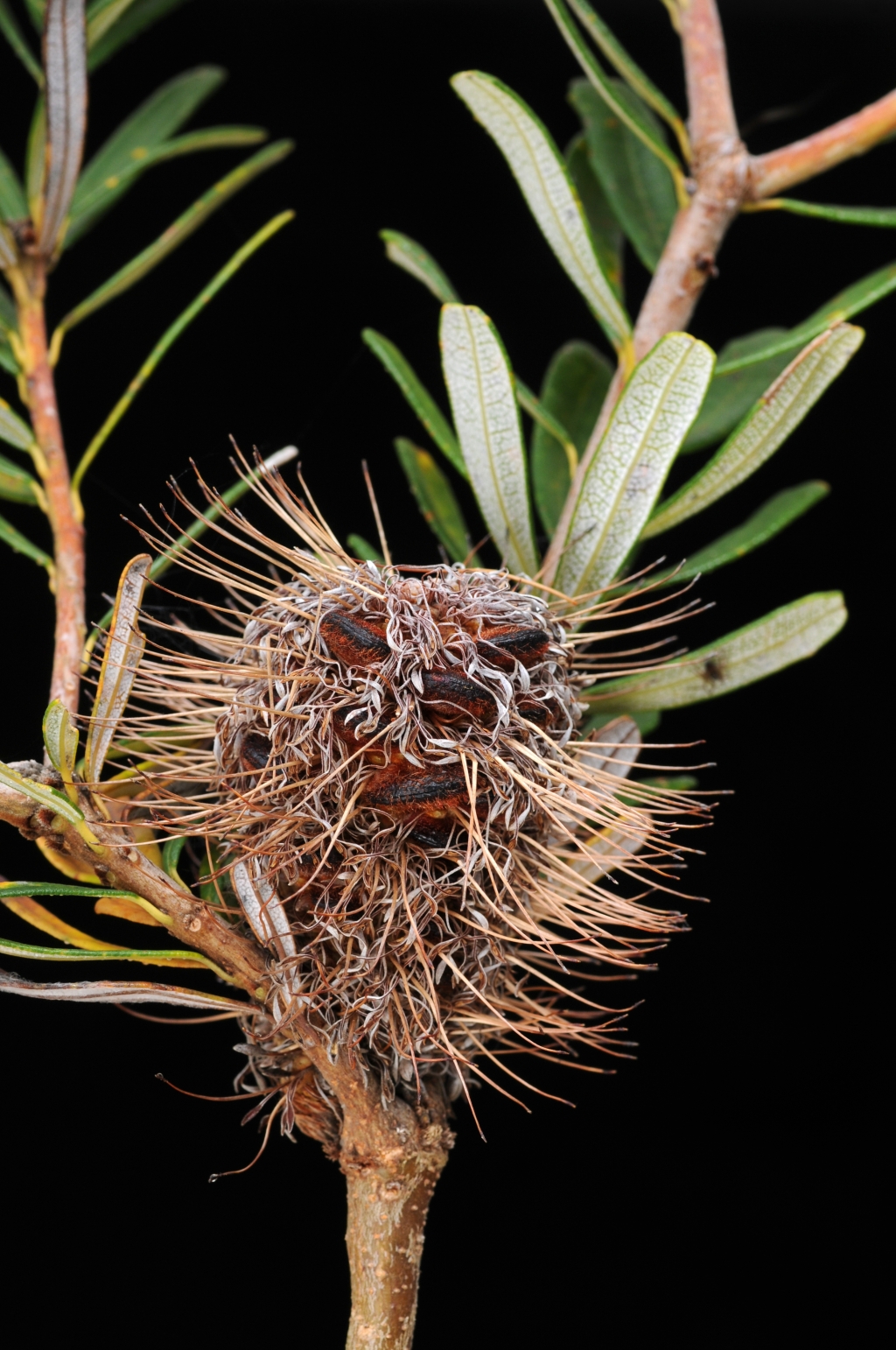Banksia
Trees, shrubs or prostrate creepers (not in Victoria), sometimes lignotuberous; branchlets and young leaves hairy. Leaves usually alternate, sometimes whorled, simple, margins entire or toothed, tough and leathery, subsessile to distinctly petiolate, discolorous, upper surface usually glabrescent, lower surface usually hairy and paler. Inflorescence cylindric to ovoid, usually terminal, dense, many-flowered, often subtended by a whorl of young branchlets; rachis woody, elongated. Flowers usually zygomorphic, sessile, paired, each flower subtended by a floral bract, each pair subtended by a common bract. Tepals initially coherent in a tube; later all 4 tepals usually free; anthers subsessile, apiculate; hypogynous glands 4, small, membranous; ovary sessile, ovules 2; style long, straight, curved or hooked, tip barely dilated, pollen presenter usually erect, stigma maturing after anthers. Fruit a 2-seeded follicle opening via 2 woody valves; few to many follicles transversely arranged and partly embedded in a woody infructescence; seeds 2, winged terminally, with a flat woody 'separator' between them.
c. 174 species, all but one endemic to Australia (mostly in south-west Western Australia), 1 extending to New Guinea.
Now includes Dryandra R.Br. (see Mast & Thiele 2007). The above description only represents the species from eastern Australia (i.e. does not account for taxa formerly in Dryandra R.Br.).
Jeanes, J.A. (1996). Proteaceae. In: Walsh, N.G.; Entwisle, T.J., Flora of Victoria Vol. 3, Dicotyledons Winteraceae to Myrtaceae, pp. 830–887. Inkata Press, Melbourne.
 Spinning
SpinningMast, A.R.; Thiele, K. (2007). The transfer of Dryandra R.Br. to Banksia L.f. (Proteaceae). Australian Systematic Botany 20: 63–71.




